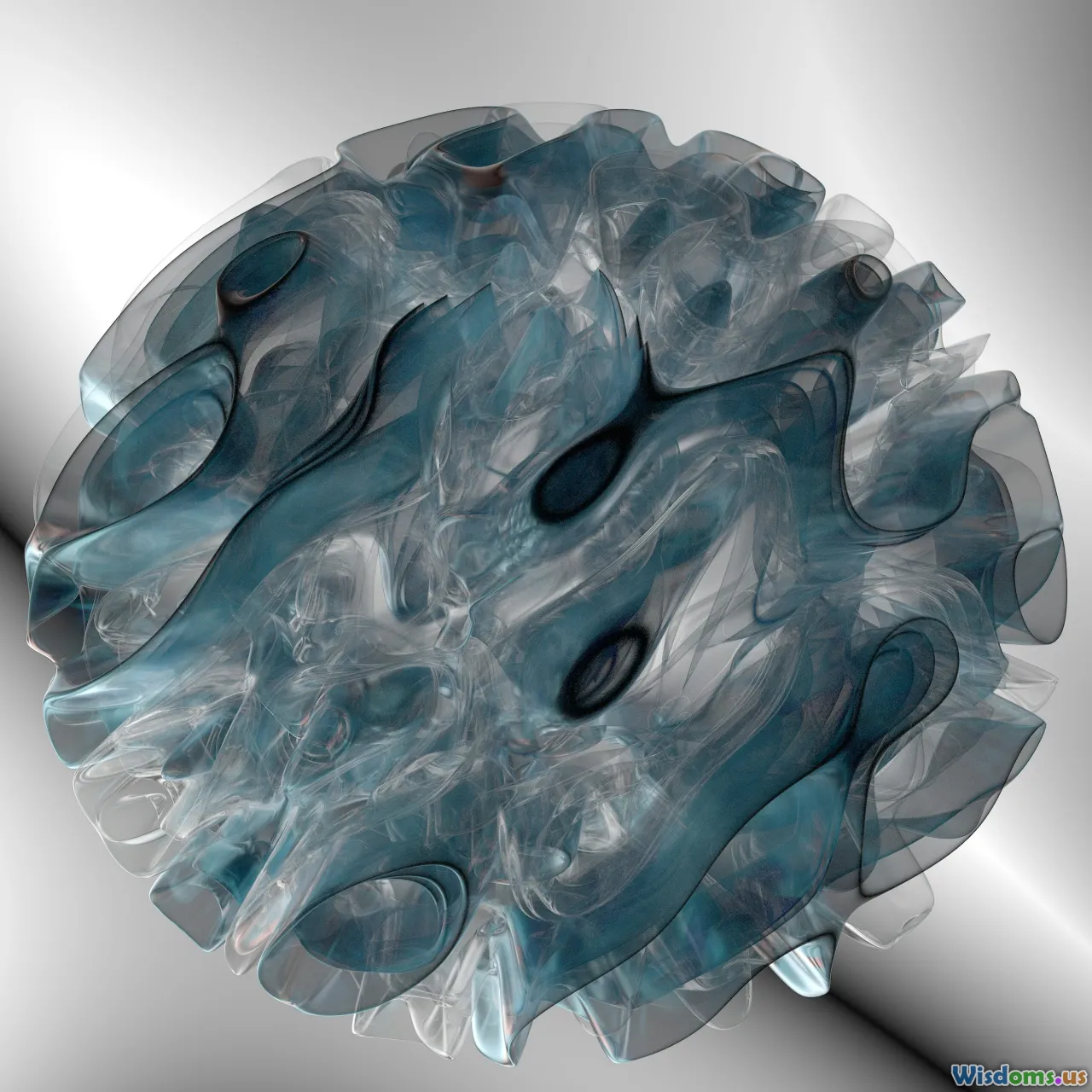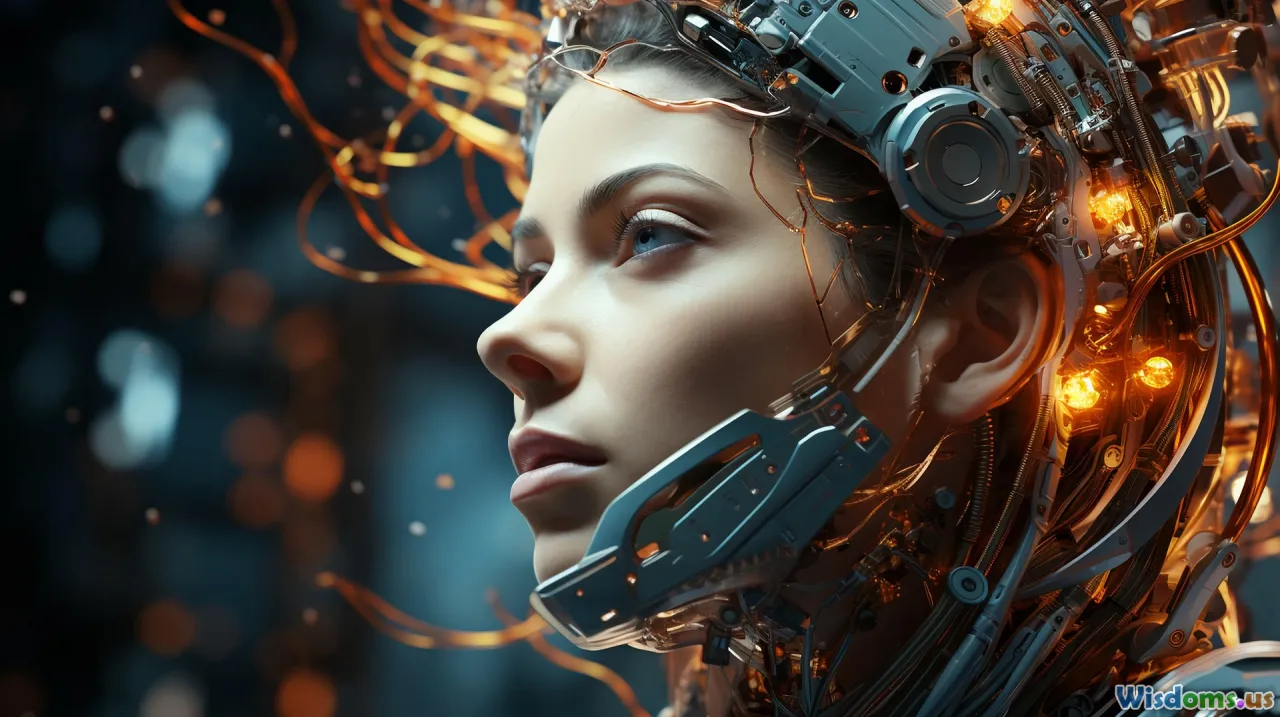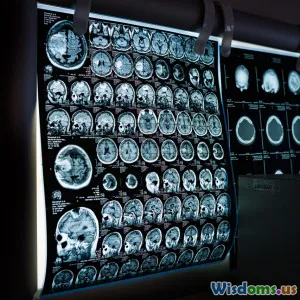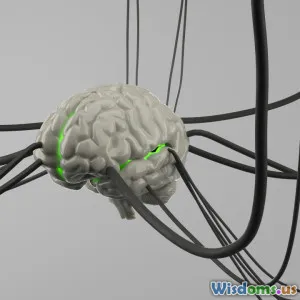
Can Brain Science Eliminate AI Biases For Good
16 min read Explore how insights from brain science could play a pivotal role in addressing and eliminating biases in artificial intelligence systems. (0 Reviews)
Can Brain Science Eliminate AI Biases For Good?
Every major leap in technology provokes a philosophical question: can we design our tools to match our values? Artificial Intelligence, once a distant dream, has become our everyday companion – answering emails, filtering resumes, and adjudicating loans. Yet, as machines grow smarter, their decisions can seem unfair or prejudiced, poisoning public trust and, sometimes, damaging real lives. AI bias isn’t just a technical hiccup; it’s a social minefield. But perhaps the ultimate solution comes not from more computation, but from closer study of the biological marvel inside our heads: the human brain. Recent intersections of neuroscience and machine learning suggest a radical idea – that mimicking brain science might help AI shake its biases, once and for all.
Understanding The Roots of AI Bias

To appreciate this possibility, we must first grasp where AI bias sneaks in. Every algorithm learns from data. If historical data is tainted by segregation, discrimination, or simple imbalance, so too are its digital offspring. For example, Amazon’s initial automated hiring tool learned to prefer male resumes over female, merely echoing the company’s historic workforce demographics. Similarly, facial recognition software has struggled to accurately represent people of color, due to underrepresentation in training images.
Some of the most pernicious forms of AI bias are less overt. A predictive policing algorithm might recommend increased patrols in historically marginalized neighborhoods, not necessarily because of a higher crime rate, but because biased records made those areas appear more problematic. In 2016, ProPublica found that risk assessment software used in U.S. courtrooms was twice as likely to misclassify Black defendants as high risk, compared to white defendants.
Attempts to audit AI bias have grown more rigorous in the past five years. In tech, “fairness metrics” can check whether models make uneven decisions among ethnicities, genders, or other groups. But retroactively fixing an AI’s bias is tough; like a jigsaw puzzle assembled upside-down, solutions often come piecemeal and imperfect. Can deeper inspirations from the human brain nudge us toward a fundamentally less biased intelligence?
The Brain’s Approach to Learning and Bias

Brains, of course, aren’t unbiased themselves. Decades of behavioral research reveal how readily human minds develop stereotypes, confirmation biases, or unspoken assumptions – shortcuts built for efficiency, but not fairness. Classic psychological experiments, like the Implicit Association Test, show how these unconscious leanings shape decisions every day.
Yet, unlike static AI models, the human brain is constantly re-shaping its own connections through neuroplasticity. Children, for example, can rewrite ingrained language biases after exposure to new dialects or cultures. Therapists harness the brain’s flexibility to combat prejudices in adults, through techniques such as cognitive-behavioral therapy. Diversity training attempts to nurture “cognitive empathy”: the ability to step into another’s shoes and view the world from different perspectives.
Three principles stand out from neuroscientific research:
- Contextual Reasoning: The brain weighs social cues, cultural context, and intent, beyond surface features.
- Continuous Learning: Humans revise their assumptions as they encounter new, contradictory information.
- Meta-cognition: People can become aware of their own biases, and deliberately compensate for them.
AI systems, conversely, often operate in rigid or narrowly defined environments, struggling to match this adaptability. But what if we built AI with these same brain-inspired properties?
Brain Science’s Lessons for Bias-Resistant AI

Neuroscience increasingly illuminates practical pathways to fairer AI. Techniques inspired by the human brain have already shaped breakthroughs in deep learning, where artificial neural networks loosely mimic the hierarchical layers in our cortex. But to tackle bias specifically, the following approaches are gaining traction:
1. Contextualizing Data
Rather than treating all training examples as equivalent, AI can learn to analyze the context – who created the data, in what sociocultural environment, and for what purpose? For instance, MIT’s Media Lab helped pioneer models that weigh photographic context, not just pixel patterns, leading to facial recognition AI that better respects cross-cultural differences in appearance and even expression.
Case Study: Microsoft’s AI for speech recognition originally stumbled with non-Standard American English accents. By retraining models with diverse voice samples and situational cues (noisy environments, informal speech), they achieved not only technical improvement but reduced bias rates for minority speakers.
2. Continuous and Adaptive Learning
The brain rarely “locks in” biases for life, and neither should AI. New adaptive algorithms allow systems to update their parameters as people interact – akin to learning through feedback. The emerging field of meta-learning enables AI to recognize when new evidence is at odds with ingrained models, prompting it to question previous assumptions.
Example: Google’s YouTube began actively countering its algorithm’s historical bias by inviting diverse creators into algorithmic design reviews, then retraining its recommendation engine continuously as trending social tastes shifted. This flexibility is now seen as a gold standard for platform fairness.
3. Building Ethical Self-Awareness
Perhaps the boldest frontier borrows from meta-cognition. AI can be equipped with modules that monitor, flag, and even “reason about” its own decisions, much like people reflecting on their impulses. Researchers at Stanford and DeepMind propose ethical AI layers that simulate alternative choices, explicitly evaluating the fairness of potential actions.
Insight: Trials of such technology in medical diagnosis AI found measurable reduction in race- or gender-based error rates when an “ethical reflection” stage was inserted into the decision pipeline.
Analogous Structures: Cortex And Algorithms

Consider the famed cortex of the human brain – a multilayered structure processing sensory input, memory, and judgment. Deep networks in AI deliberately echo this design. But recent studies suggest the value is more than mathematical similarity.
In animal brains, lateral connections between cortical areas enable flexible cross-talk, which counters rigid patterns and nurtures adaptability. New AI architectures, like Graph Neural Networks and Capsule Networks, attempt to recreate this dynamic, enabling “modules” of AI knowledge to communicate, challenge, and refine each other’s outputs.
Comparison: The 2020 AI system AlphaFold, which cracked the protein folding problem, did so by aggregating knowledge from diverse “sub-networks” that could query, correct, and augment predictions in real time – a phenomenon reminiscent of the cortex’s dynamic interplay. This architecture also shows early promise for mitigating bias in AI models applied to health, genomics, and even natural language.
Overcoming Challenges: Limitations of Brain-Inspired Solutions

So should every AI look like a synthetic brain? Not quite. Some caveats remain:
-
Human Bias Is Pervasive: Since podcasts, textbooks, and historical data encode our own prejudices, even a brain-like AI can inherit our social faults if not adequately curated.
-
Black Box Problem: Brain-inspired models, like their biological counterpart, can be highly complex and opaque. That means the source of a machine’s bias isn’t always easy to diagnose, even for its creators. This opacity – the so-called “black box” problem – is a focal challenge for fields like AI ethics and explainable AI.
-
Effort and Scale: While the human brain excels at “learning on the fly,” current computational cost for such flexible, context-driven learning is immense relative to traditional machine learning methods.
-
Evolving Definition of Fairness: Cultural norms evolve. Fairness itself is a moving target, complicating any permanent blueprint for unbiased intelligence.
Academics from University of Cambridge caution that while brain science provides invaluable templates, cultural shifts in humans are just as crucial for durable fairness.
Where Brain Science Holds Unique Promise

Despite these hurdles, recent collaborations between neuroscientists and AI engineers are surfacing dazzling results. In fields of natural language understanding, medical diagnostics, and even tactical robotics, brain-inspired systems are not only fairer but often outperform their mechanically-engineered peers.
-
In 2021, OpenAI incorporated “empathy testing” nodes inside some chat models. These “nodes” predict the affective impact of output – a concept borrowed from affective neuroscience, which studies how the brain encodes the emotions and needs of others. Independent reviewers found that outputs became measurably less biased and more contextually considerate, suggesting real if incremental progress.
-
Neuroethics research, led by the Kavli Institute, is developing audit protocols where human brain scans help assess whether AI models are likely to “slip” into biased reasoning patterns. These methods use fMRI data to boost model transparency, making it easier to catch and correct unwanted digital prejudices.
Such interconnected research champions a key idea: that understanding human cognition, and its propensity to adapt, could lead to “fair by design” AI – rather than awkward after-the-fact corrections.
Roadmap for Applying Brain Science in AI Policy and Design

Taming AI bias goes far beyond algorithm tweaks. What will it take to fold these insights seamlessly into industry and society?
Actionable Steps:
- Cross-Disciplinary Teams: Recruit neuroscientists, data scientists, ethicists, and domain experts to design holistic AI systems — reducing the risk of “siloed” blind spots and promoting adaptive, fair solutions.
- Ethical Data Audits: Regularly audit datasets with teams trained in cognitive psychology and neuroscience. Just as human decisions benefit from diverse counsel, diverse interdisciplinary reviews inoculate AI against monocultural bias.
- Lifelong Learning Pipelines: Build AIs that incrementally update beliefs, similar to lifelong human development. Continuous learning cycles – monitored for harmful drift or new biases – bake adaptability into the system’s very core.
- User Feedback Loops Modeled on Cognitive Therapy: Enable end-users to challenge, flag, and retrain the AI system—mirroring how therapists help patients reflect on and revise their own thought patterns.
- Transparent Meta-Layers: Design transparent “meta” layers within AI models, which publicly log when, how, and why key decisions are made. These logs foster ongoing reviews where harms can be preemptively rooted out.
Example: The European Union’s 2021 AI Act stresses “science-based risk management,” encouraging member states to blend findings from both neuroscience and social science in their regulatory frameworks.
Setting Realistic Expectations for the Future

Can brain science eliminate AI bias for good? If “for good” means no conceivable prejudice, anywhere, ever, the answer probably remains elusive. Both the machine and the human brain are malleable, contentious, and shaped as much by society as biology. But by elevating brain science as a guide for AI bias management, we make radical, practical advances. We introduce self-checking, context-sensitive, adaptively fair systems that minimize systemic error far beyond the brute-force corrections of the past.
And as brain-inspired AI steadily matures, we may find the ultimate irony: the more seriously engineers take our own biology, the more our creations will earn our trust. The challenge will not disappear – but with every lesson we take from the mind, we build a digital intelligence more worthy of our ideals.
Rate the Post
User Reviews
Other posts in Artificial Intelligence
Popular Posts
















